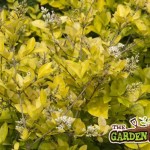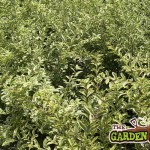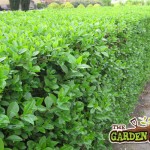While Beech is the king of the countryside, privet is prince of the city. These plants are ideal for built areas and small front gardens as they offer fast privacy and screening without outgrowing their location. Most importantly however, privet is also very tolerant to smog and smoke fumes that generally fill the air in our cities.
While some plants suffer in these conditions, bare root privet will not be effected by carbon monoxide ensuring your hedging stays happy even if right along the roadside. Privet hedging is also happy in most soil so really no matter what the conditions they will thrive from head to toe. Both wet and heavy soils suit privet plants.
- Golden Privet
- Ligustrum sinense ‘Variegatum’
- Ligustrum Ovalfolium
Some other plants that are resistant to city pollution include:
- Viburnum
- Wiegelia
- Cotoneaster
- Berberis
- Aucuba
- Ribes
- Fatsia
- Philadelphus
- Italian Alder
- Ash
- Field Maple
- Sorbus intermedia
One concern that is effecting all city grown is the lack of water the penetrates down to root level. This is due the fact that most areas of cities are paved over. The result is water running off the paving and leading to flooding in times of heavy rain and in time of low rainfall it leads to a lack of water reaching soil level and plant roots. To combat this each garden should take the time to ensure there garden allows water penetration. Reducing the amount of paved areas and increasing the size of planting holes when planting.
If you intend on planting a privet hedge you should dig a trench approx. 2 foot wide and a foot deep. This will allow for ample space for water penetration and root expansion in the first formative years of your hedge
Ensure to give your privet hedge the best possible start by preparing the soil well. Take the time to remove any rocks and stones and roots. Add some well rotted farm yard manure and mix it through the topsoil. Kill of surface weeds two weeks before planting and ideally you should put down weed block and mulch to keep weeds at bay and to further retain moisture.
There are a number of privets that are suitable for hedging
Ligustrum Ovalifolium – Simply, the Green Privet, this makes a good hedging plant forming a dense mass of glossy green foliage. It has a fast growth rate as it can grow 30cm each year meaning it won’t be long before it has achieved a height of 6ft.
Ligustrum sinense ‘Variegatum’ – As the name would suggest this is a variegated privet. With green leaves and yellow margins this privet offers more interest and is a touch brighter than the standard green privet. As both are good in shade, this option is a good choice as it can brighten up a dull corner. However this privet is deciduous so you won’t get much privacy in winter
Ligustrum vicaryi – The golden privet. Limy green leaves of similar shape to ovalifoium make this privet an attractive option.


